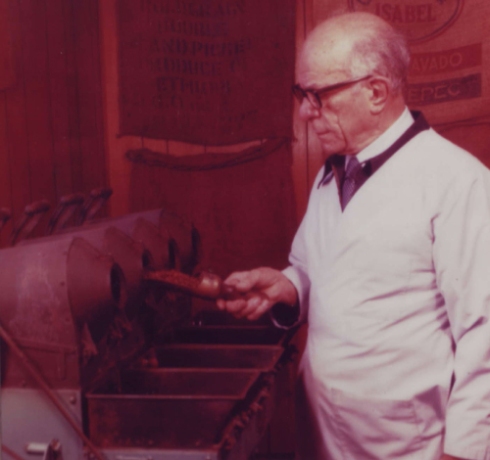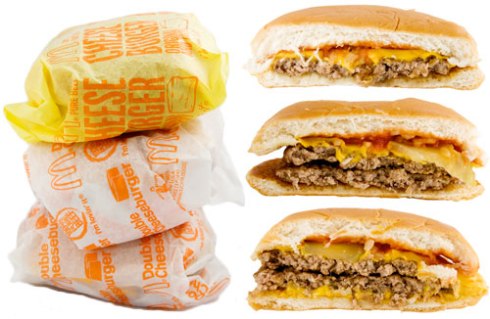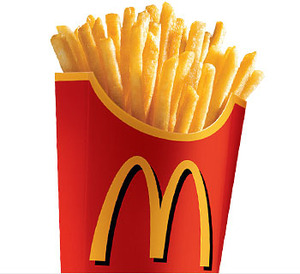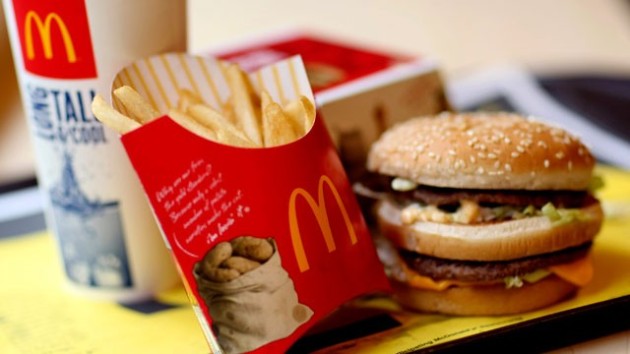“From the beginning, McDonald’s has built a system of quality, service and cleanliness (QSC) into every aspect of our business – from our suppliers to our restaurants. We take food safety and quality very seriously at McDonald’s. Which is why our quality and safety requirements – which meet or exceed USDA standards – are among the strictest in the restaurant industry.”
– McDonald’s Corporations
McDonald’s is one of the world’s largest fast-food chains. It is their mission to produce quality and consistency in all of their firms whether it may remain in the United States or Hong Kong; the food process all still remains the same. The only noticeable variety is the special dishes at certain locations, catering to its local culture. Despite the slight menu differences, the processes of their main marketing items remain identical.
 No matter what country you’re in, after a long night, coffee is always the answer. McDonald’s is said to serve as competition to Starbucks Coffee. Their main coffee supplier is Gaviña Gourmet Coffee. It was approximately 25 years ago when Gaviña was asked to create the perfect blend of coffee for McDonald’s. He went traveling the globe, and found that the best beans are found in the soils of Central and South America. After his quest for the perfect beans, he created McDonald’s famous gourmet Premium Roast. Coffee is part of Gaviña’s family’s business and their dedication remains to McDonald’s. The family does not grow their own beans, but they have their select suppliers who grow the best beans. Representatives of the family business must perform a sensory test, taste and smell, from each load that is delivered. If it passes the test, the beans are then cleaned and split into the facility where it is either grounded or packaged whole. After being tested and packaged, the beans are sent out to its customers where there are strict instructions on handling the beans in order to maintain quality control. McDonald’s employees are informed on the storing and brewing procedures of the beans.
No matter what country you’re in, after a long night, coffee is always the answer. McDonald’s is said to serve as competition to Starbucks Coffee. Their main coffee supplier is Gaviña Gourmet Coffee. It was approximately 25 years ago when Gaviña was asked to create the perfect blend of coffee for McDonald’s. He went traveling the globe, and found that the best beans are found in the soils of Central and South America. After his quest for the perfect beans, he created McDonald’s famous gourmet Premium Roast. Coffee is part of Gaviña’s family’s business and their dedication remains to McDonald’s. The family does not grow their own beans, but they have their select suppliers who grow the best beans. Representatives of the family business must perform a sensory test, taste and smell, from each load that is delivered. If it passes the test, the beans are then cleaned and split into the facility where it is either grounded or packaged whole. After being tested and packaged, the beans are sent out to its customers where there are strict instructions on handling the beans in order to maintain quality control. McDonald’s employees are informed on the storing and brewing procedures of the beans.
Different from the coffee, McDonald’s signature hamburgers and French fries are prepared differently. They are mass-produced due to its high demand. The beef and potatoes are processed in the different factories from various suppliers. After cleaned and processed, additional artificial and natural flavors are added to the meat to assure a consistent taste among all meats. Once the processing and flavoring are complete, the meat is then packaged and frozen ready to be delivered to the nearest McDonald’s. To further explain the dishes’ specific process, two videos describing each process in detail is embedded in the pictures.
*click the pictures to view videos
The first video is a behind the scenes production of Lopez Foods, who are one of McDonald’s biggest beef suppliers. The meat is gathered from local farms and then processed at Lopez’s factory. The workers must undergo sanitization procedures before entering, for example, washing their boots. The meat is then processed and while being processed is being taste tested by the hour. Also, going through a machine that can detect which patties do not make the cut. If the patties are approved, it is packaged and sent to a distribution center where it can then be delivered to McDonald’s. After this process is completed numerous times, the machines are broken down and meticulously cleaned and later inspected by a member of the USDA.
The second video explains the production of the all time favorite, French fries. The potatoes are harvested from local farms on a daily basis where they are then transported to a processing plant. They are washed and then peeled where the can pushed through a machine to be cut. After being cut, the potatoes are moved into a blancher to remove the natural sugars to prevent color variation, and a solution is added to the fries to produce a consistent coat and color. The next step is the drying process where the potatoes can be removed of any excess moisture, so it can be then moved along to the fryer for 45-60 seconds. After the pruned, dried, and fried, they are then processed and frozen ready to be delivered to the nearest McDonald’s.
The next time you drink a coffee, dive into a hamburger, or salt your french fries, think twice about where it comes from. Who would’ve guessed that your premium roast coffee was made from beans that were hand selected, or that you’re experience of signature taste of the double cheeseburger is the same of another human being in a completely different country. The McDonald’s experiences is the same no matter where you travel.
Works Cited
Madarang, Charisma. “Watch How McDonald’s Makes Their Fries.” FoodBeast. 21 10 2012: n. page. Print. <http://foodbeast.com/2012/10/21/watch-how-mcdonalds-makes-their-fries/>.
Mills, Michelle J. “Coffee maker Michael Gavina shares his famil’ys secrets to creating premium grinds for more than a century.” Los Angeles Daily News. 25 02 2013: n. page. Print. <http://www.dailynews.com/lifestyle/20130226/coffee-maker-michael-gavina-shares-his-familys-secrets-to-creating-premium-grinds-for-more-than-a-century>.



 Economists also use McDonald’s to see the trend in wages and prices. In each franchise, the workers all perform almost identical tasks and are shipped similar ingredients to be prepared according to international protocol. Therefore, the comparison at an international level is what economists would consider “apples-to-apples.” A Princeton scholar by the name of Orley C. Ashenfelter discovered a way to track wage growth and purchasing power worldwide by using the price of Big Macs. Ashenfelter calculated the number of Big Macs one’s hourly salary permitted. With these statistics, Ashenfelter could reveal who was getting richer, rich, or nothing at all. As a result of Ashenfelter’s experiment, Big Macs and McWages, he could explain three of the most pivotal concepts in the international economy: the rise of the West, the rise of the rest, and the Great Recession.
Economists also use McDonald’s to see the trend in wages and prices. In each franchise, the workers all perform almost identical tasks and are shipped similar ingredients to be prepared according to international protocol. Therefore, the comparison at an international level is what economists would consider “apples-to-apples.” A Princeton scholar by the name of Orley C. Ashenfelter discovered a way to track wage growth and purchasing power worldwide by using the price of Big Macs. Ashenfelter calculated the number of Big Macs one’s hourly salary permitted. With these statistics, Ashenfelter could reveal who was getting richer, rich, or nothing at all. As a result of Ashenfelter’s experiment, Big Macs and McWages, he could explain three of the most pivotal concepts in the international economy: the rise of the West, the rise of the rest, and the Great Recession.
